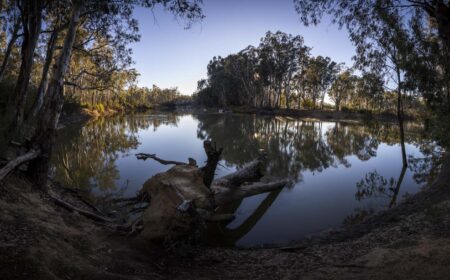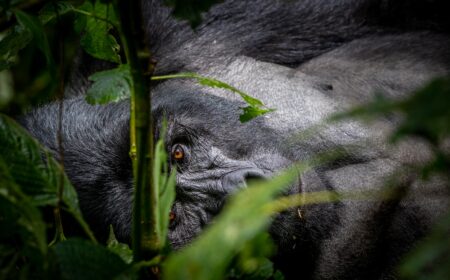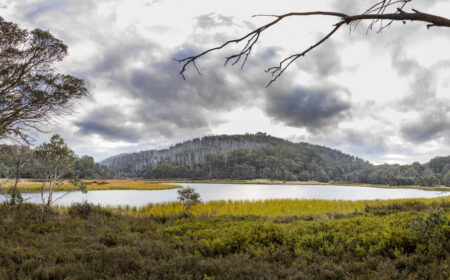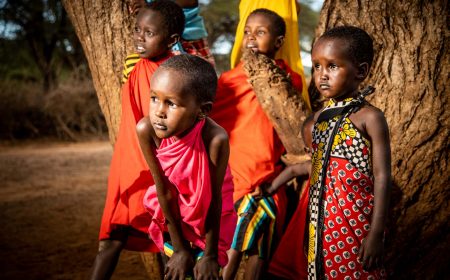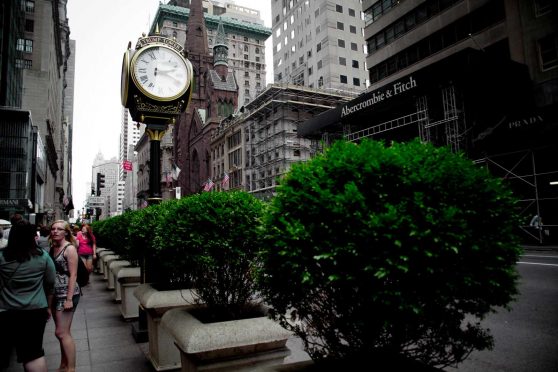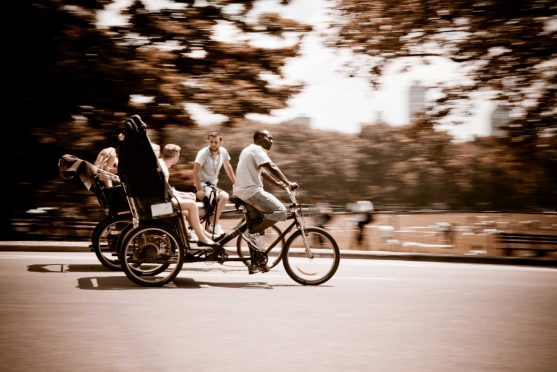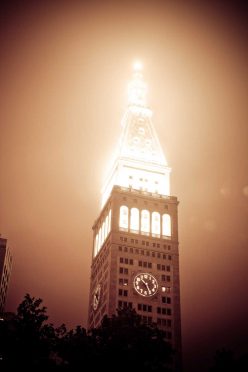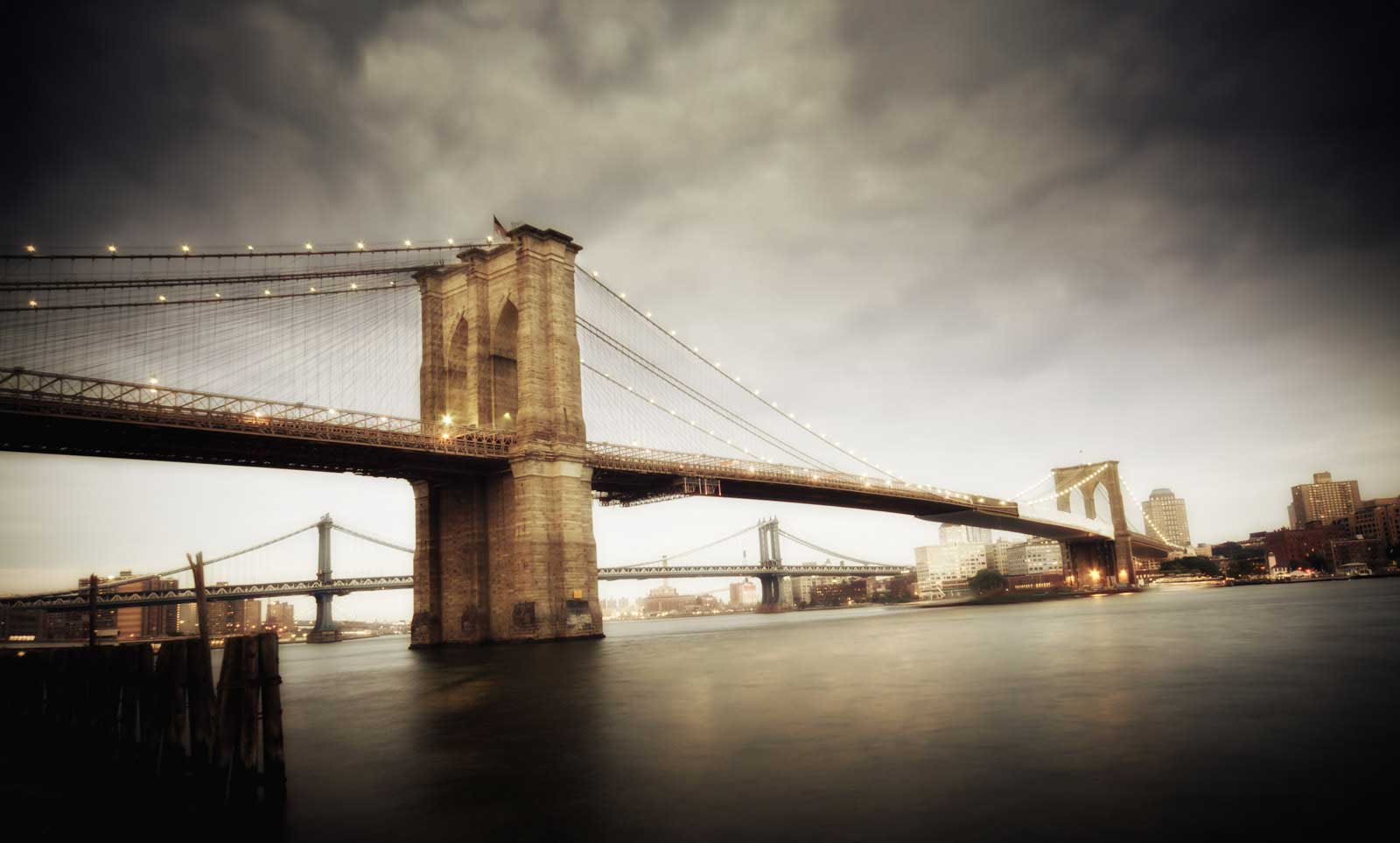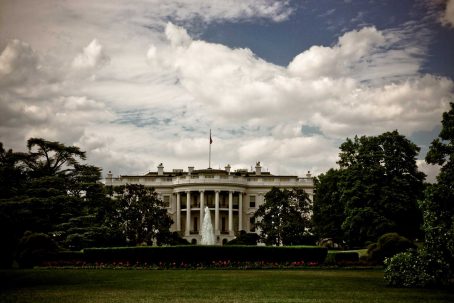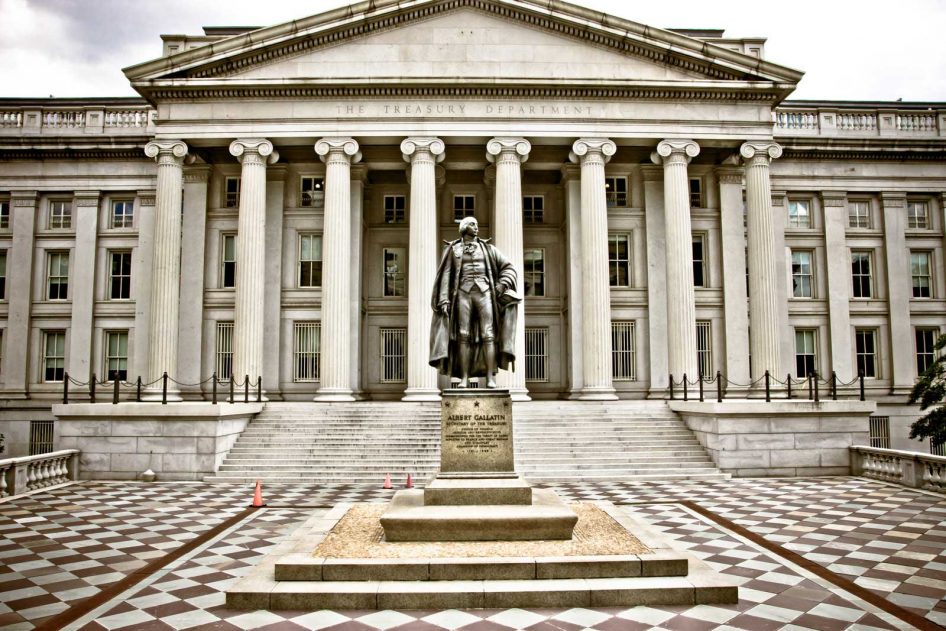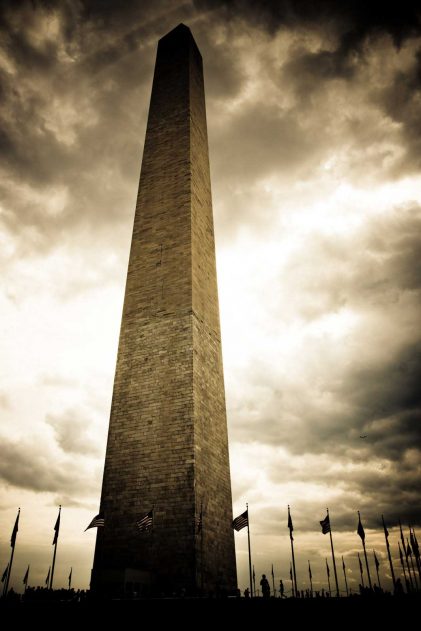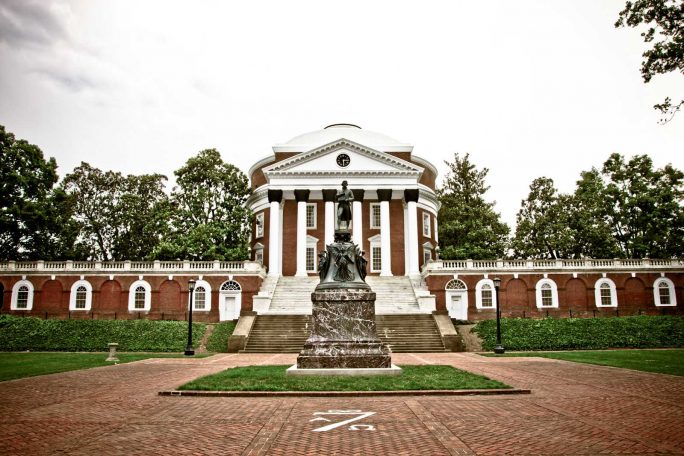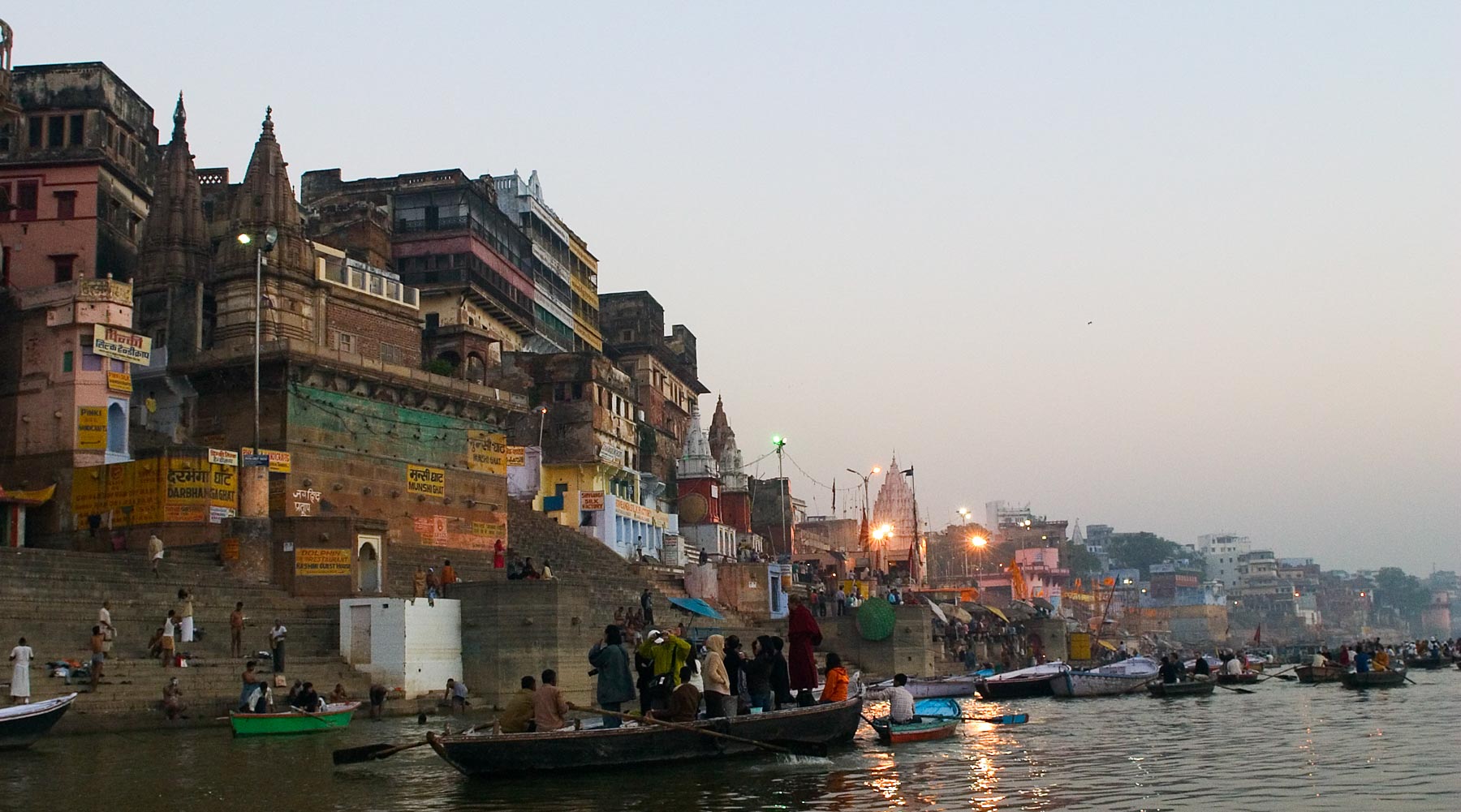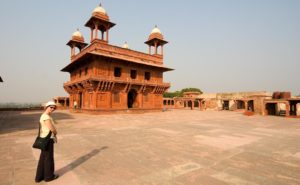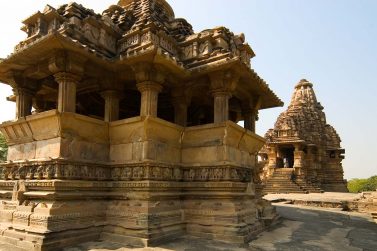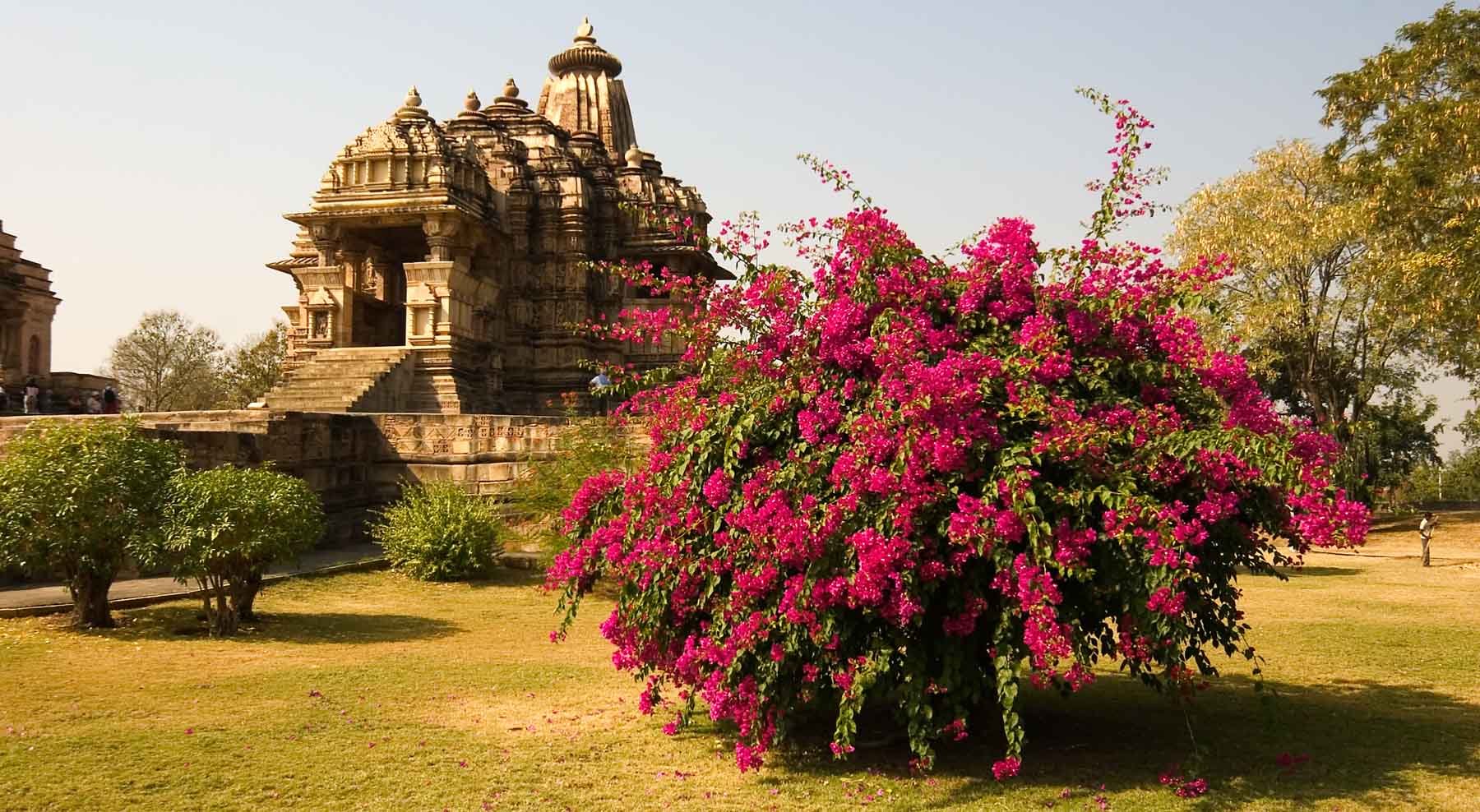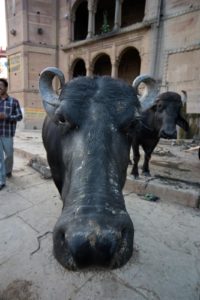A whistlestop tour of the US New York, Washington and Charlottesville in just one week
We have done quite a bit of travel, but this was our first time in the US. Neither of us has ever been particularly interested in travelling to the US. Sure, there are areas we would like to see, but it wasn’t high on our “must visit” list.
How wrong we were, New York is amazing! We fell in love with the city in the three days we were there. So vibrant, so much to see and do and so huge. We stayed near Times Square, which has to be seen to be believed; sure you may have to fight your way through the tourists, but it is well worth it.
Ade really wanted to check out B&H photography after reading so many reviews about it online. It really is an experience! Three floors of photographic equipment each floor taking up the size of a full New York block! Fortunately the store closed at 2pm, or I may never have got Ade out of there (I got him back by taking him into Tiffany’s on Fifth Ave, six floors of jewellery.)
We braved the subway – you can’t come to NY and not tackle the subway, right? – and headed to Little Italy for some lunch. We felt like we were back in Europe, until the waiter spoke to us in his thick New York accent!
Meandering back to Manhattan via SoHo we stopped to check out the Peter Lik photographic gallery so Ade could get some inspiration – his photos are amazing and as many of them were of Australian landscapes, we got to admire the beauty of our own country, from the other side of the world.
Back in Manhattan the sun was starting to set so we headed out to Times Square to get some night shots, Times Square is impressive by day, but even more so by night.
The following day I could barely walk! But there was still so much of New York to see so we made our way up to Central Park via Fifth Ave – OMG, the shopping! If only we had more time here!
Central Park is huge, one of the staff in Tiffany’s told us it took him three full days to see it all – and I don’t doubt it for a second, we spent about two hours wandering around and saw about a fifth of it!
We wandered past the Museum of Natural History, which our concierge said was amazing and worth photographing, but alas it was covered in scaffolding – every photographer’s nightmare, no doubt.
So instead we headed to the Statue of Liberty – hoping that surely there would be no scaffolding on this icon!
The ride out took about 20 minutes and cost $13, pretty cheap, unfortunately tickets inside the Statue were sold out for four months – clearly our turn up and see mode of travel had backfired on us, but then the statue is best photographed from the ground, or the water!
I always find it quite surreal seeing iconic sculptures up close. You can see countless photographs, read about them in books and watch them on TV, but nothing can compare to experiencing it for yourself.
The Statue of Liberty is everything you would expect – huge, busy and incredibly impressive.
But once you have seen it – and of course photographed it from every possible angle – there is not really much more to do on Stanton Island so we headed back to Manhattan.
We walked from the ferry terminal around to Pier 17, which gave us fantastic views of the Brooklyn and Manhattan Bridges. Pier 17 is full of shops, restaurants and bars as well as historic ships. You can take a ride on one of the ships, or just admire them from the dock. Unfortunately all the restaurants are on the opposite side to that which the bridges are, nevertheless it is well worth a visit.
From New York we were off on a fleeting visit through Washington and on to Charlottesville.
We had just a quick two-night stop in Washington to take in the sites of the nation’s capital.
I’m sure I had developed shin splints from all the walking in New York, so struggled to walk between the monuments, but there was so much to see we had to power on. Our first stop was the White House.
We peered in through the fences, watched as a protest passed by, then moved on to Capitol Hill, the Mall – which includes the Washington Memorial and passed the Smithsonian Institute.
Washington train station is amazing. It’s beautiful, well worth looking at. Washington was very interesting, so many amazing things to see and do. I know we didn’t do the city justice, but I have to admit, I would take New York any day over Washington.
From Washington we caught the train to Charlottesville, a quick three-hour trip.
The people in Charlottesville are so friendly and the city is beautiful. It’s a real university town – the taxi driver commented on our way through that the University owned the whole town, and they just about do! Their buildings are scattered throughout and they are beautiful.
The rotunda, designed by Thomas Jefferson was well worth a look, evidently there is a Declaration of Independence exhibition here that is well worth a look, but it started pouring with rain, and as I could still barely walk, I had to give it a miss. Instead we caught the free trolley into town and had a gellati.
Our stop was all too short, but it gave us a good preview of the area and inspired us to come back to this part of the world in the future – besides, we really should head back and see that Declaration of Independence, oh and do some shopping in New York!
Have you been to the US? We’d love to know what you thought and where we should head next time we visit?
Join us on Facebook, Twitter and Instagram for more travel inspiration.
The Breathtaking views of the Sunrise over the Ganges Ade sets a new photographic record in Varanasi
One hundred photos before 7am, that’s extreme, even for Ade, but the Ganges, in Varanasi, has that effect.
The city centre is madness, there are more tourists in Varanasi than we have seen in all of India, all here to see the Ganges.
We had arranged a rickshaw wallah the day before, so at 4am prompt he was outside our hotel, waiting to take us to the Ganges before sunrise.
Winding our way around the backstreets of the deserted city, I am just starting to think we are being taken on a joyride when the Ganges open up before us.
That first view of the holy waters is breathtaking. The golden glow over the river makes for a very spiritual experience. The river itself is much wider than I had anticipated and while one side is crowded with Ghats, the opposite side is barren.
The Ganges at sunrise is packed with boatloads of tourists of all nationalities. Of course, the thing to do here is to find someone to sail you out into the middle of the Ganges and along the various ghats.
And as we sailed along this magical place we watched as the locals went about their usual routines – washing their clothes, bathing in the holy waters, some even went as far as drinking the water – a very brave move indeed, given the colour of the water and the stories you hear of dead animals floating by. Fortunately we didn’t see any dead animals, but I’m sure they were there.
The ghats are a haven for the entrepreneurial type with people selling everything from boat trips along the river to jewellery, toys or even massages.
And while the day starts early here, it by no means finishes early. At night there is a carnival-like atmosphere as locals and tourists alike, once again fill the steps of the ghats.
While each of the ghats are interesting in their own way, the most fascinating would have to be the Manikarnika Ghat. This is the most sacred of all the ghats and is adjacent to the primary cremation ground. The pyres burn constantly and the surrounding buildings are all tinged with black from the smoke. It lends an eerie feeling to this part of the Ganges.
Central Varanassi is a maze of narrow laneways full of market stalls. As well as the stalls the Golden Temple and the Jnana Vapi Mosque are both in the city centre. There are also temples on almost every corner – from small shrines to large temples.
It’s a great place to simply wander around and get lost in.
Join us on Instagram, Facebook and Twitter for more travel inspiration.
A 3-week 4WD adventure in WA
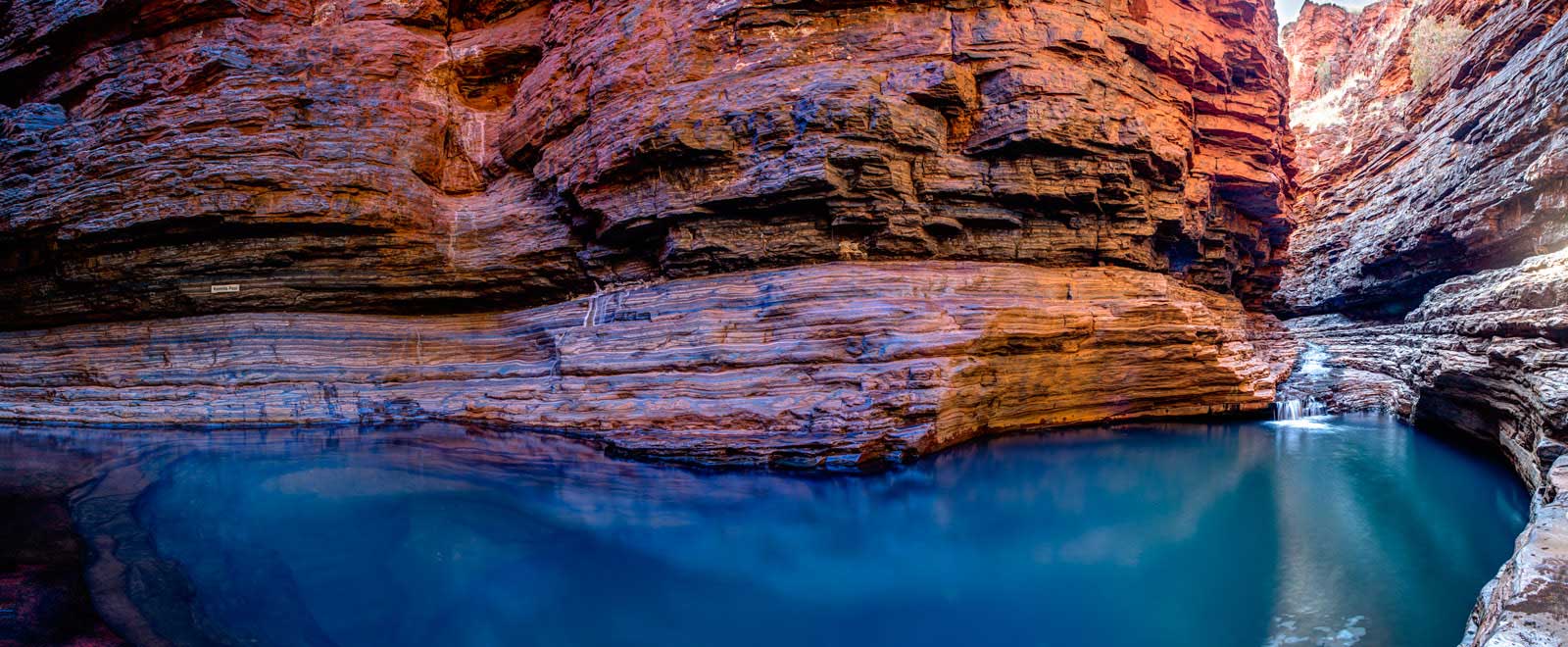
The brief was simple enough really. Jam as much of Western Australia into three weeks as we could. As it turns out we didn’t do too bad.
We got in five nights in Karijini NP; swam with whale sharks in Exmouth and ended it all with three nights relaxing in Broome. Two Four Wheel Drives, four travellers (seven for a few days if you include the French backpackers) and a whole lot of fun.
Our itinerary was roughly as follows:
Sun 15 June Fly to Perth
Day 1-Mon16 Perth to Denham (820km). Visit Pinnacles. Denham 2 nights
Day 2-Tues17 Denham
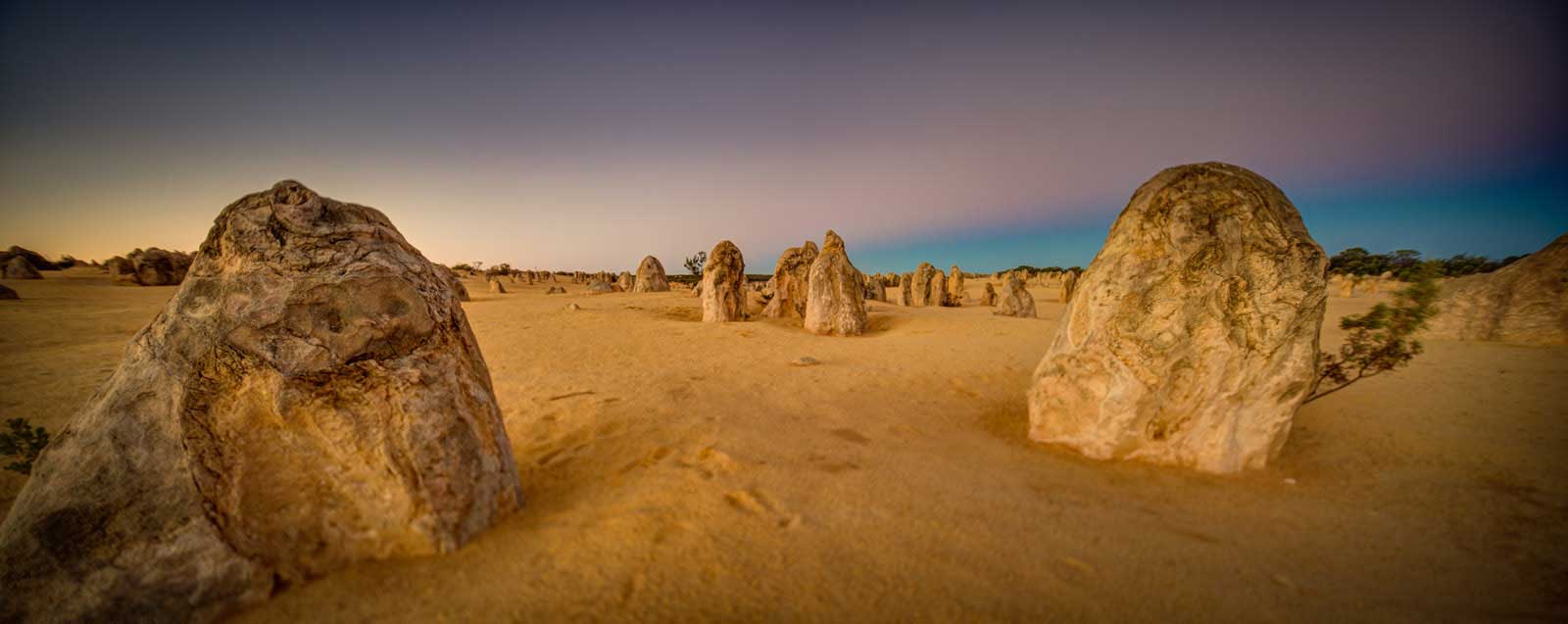
Day 3-Wed18 Denham to Coral Bay (560km). Coral Bay 1 nights
Day 4-Thurs19 – Coral Bay to Cape Range NP, through the Military testing area. Alot of sand dunes and corrugations. Cross Yardee Creek. Cape Range NP 2 nights.
Day 5-Fri20 Cape Range NP – Swim with whale sharks.

Day 6-Sat21 – Drive from Cape Range NP to Karijini, via the Warlu way. Stopping at Exmouth (737Km). Karijini NP 5 nights. 3 nights at dales, 2 nights at Eco Retreat.
Day 7 Sun 22. Karijini NP
Day 8-Mon23. Karijini NP
Day 9-Tues24 Karijini
Day 10-Wed Karijini
Day 11-Thurs Karijini To Milstream NP. Approx 314Km. Milstream NP 3 nights.

Day 12-Fri27 – Millstream.
Day 13-Sat28 Millstream
Day 14-Sun29 Millstream to Eighty Mile Beach (or Cape Keraudren) (634km) 1 night
Day 15-Mon30 Eighty Mile Beach to Broome (380Km). Broome 3 nights.
Day 16-Tues1 Broome
Day 17-Wed2 Broome

Day 18-Thurs3 Broome to Newman. About half way to Perth. Overnight in the car.
Day 19-Fri4 – Newman to Perth.
Day 20-Sat5 – Home safe and sound in Perth. Warm Bed, and Pub for footy the next day.
Day 21 – Perth.
Day 22-Sun 6 July – Fly back to Melbourne.
Check out the full image gallery here.
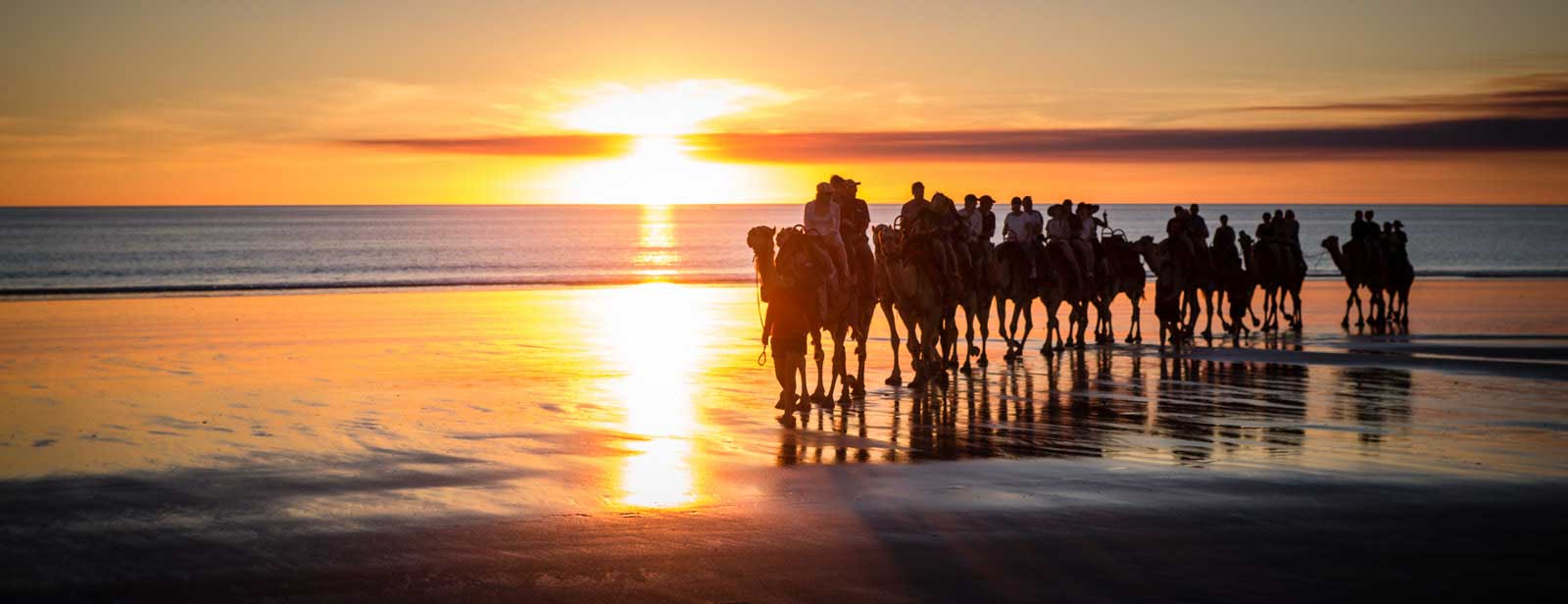
Watching the world go by in Fatehpur Sikri
Fatehpur Sikri is about an hour’s drive from Agra and while it’s a harrowing bus ride – this is India afterall – it is well worth the trip.
We arrived in Fatehpur Sikri in the afternoon and made our way straight to a hotel, with a roof top terrace so we could watch the world go by, and my was it entertaining.
Sitting on the roof top we watched as the town went about it’s business in the street below. We watched as a fight broke out between two sari-clad women only ending when one took off her shoe and threw it at the other. We witnessed the festival of decorated horses and cattle and of course, as with all of India, the sacred cows wandering the streets at will.
But as interesting as the street scene was, we were here to visit a mosque and the Royal Palace.
The Palace at Fatehpur Sikri was built by Mughal Emperor Akbar, who ruled from 1556 to 1605. The Emperor was desperate to produce a male heir and in Sikri, he came across Shaykh Salim Chrishti, a Sufi mystic, who promised the ruler he would have at least three sons. A year later the first son arrived.
In celebration, the Emperor moved his entire court to Sikri, which served as the Mughal centre for 15 years. Today the palace grounds, while somewhat desolate, are very impressive.
Picture a huge red sandstone ghost town.
The Jama Masjid, which sits just outside the palace grounds is an impressive mosque, however the constant approaches by touts make it an exhausting experience.
While it is worth braving the onslaught, we were keen to get out of the mosque to get some peace as quickly as we could.
It is far more relaxing inside the palace grounds, where tourists are left to wander in peace. We were pleasantly surprised to see that most of the tourists inside were Indian tourists. We had a lot of fun chatting to them and were constantly stopped and asked to pose for photos with them! We couldn’t help but oblige and of course asked them to return the favour!
The palace overlooks the city centre and sits amongst beautiful, lush gardens. It is a tranquil place to just wander and imagine what life might have been like when the palace was full.
The sandstone buildings are intricately carved and have been well maintained. One of the more unusual – and interesting – buildings is the five-storey Panch Mahal, where Emperor Akbar sat on hot summer nights enjoying the breeze His harem would dance around on the levels below, no doubt creating an impressive swirl of colour.
Join us on Facebook, Instagram and Twitter for more travel inspiration.
Khajuraho – home of the Kama Sutra and ‘sexy’ temples Jungle temples and some really old porn
Yeah that got your attention didn’t it?
Every now and again when you are travelling you come across a real gem, something completely unexpected that you have never heard of before.
While all of India was fascinating, for us, Khajuraho was that gem.
We had no idea what to expect in this city of temples, and were blown away by the architecture and the history of the place.
The temples are UNESCO World Heritage listed – as you would expect – and are the legacy of the Chandela dynasty.
They were built between AD 900 and 1100, however when Chandela lost power the temples were ‘lost’ and were subsequently left hidden for 700 years until an English Army officer rediscovered them.
Eighty-five temples were built, but only 25 remain standing – although while we were in Khajuraho we were told another temple had been found buried beneath a mountain – made me think about the mountains around us in a whole new light. What other delights might be buried?
The temples are separated into the Western and Eastern/Southern groups. They are adorned with relief images of all facets of human life, including (much to Adrian’s delight) images straight out of the kama sutra! (Of course you can pick up any number of souvenirs based on the images!)
The temples are amazing, so detailed and while they are in various states of repair – some still completely intact while others have lost much of the detail – all are really interesting.
It’s hard to comprehend the size and scale of each of the temples until you are standing next to them – dwarfed by the amazing buildings. You can go into each of the temples – just look out for the bats.
Khajuraho itself feeds off tourism and each shop sells much the same as the one next to it. It’s a pleasant town, but the constant badgering by the shop owners can become a little annoying.
The town is also close to another national reserve – Phana Reserve. We hadn’t read anything about this reserve but one of the staff in the hotel told us about it and said it was home to some tigers. We were sold, so headed out for a half day tour.
We saw plenty of birds, crocodiles, monkeys and deer, but still no tigers. When we got back to the hotel that night, the owner told us there weren’t any tigers in the reserve, they’ve all been moved to a separate park for their protection. Ah well, it was still a pleasant way to spend half a day.
Join us on Facebook, Instagram and Twitter for more travel inspiration.
Searching for lions and big happy smiles in Uganda And a crazy stop in Entebbe
Uganda is a country with a troubled past, it still suffers under the cloud of the Idi Amin years and for many of us The Last King of Scotland is our enduring thought of this country.
But Uganda was once known as the ‘pearl of Africa’ and for those willing to overlook its troubled past it offers a diverse and beautiful landscape and some of the friendliest people on earth.
Our first encounter with the locals was at Entebbe during a quick overnight stay the first night we arrived. We ventured out to the local weekly market place – two white women in the heart of Uganda during their Presidential elections. I’m not sure what I expected, but we were left alone to wander past the stalls, take photos and generally just shop! No one hassled us, no one stared, everyone just continued to go about their own business.
The following morning we were up bright and early and ready for our first safari. We made our way to Murchison Falls, the largest National Park in Uganda. We were surprised how green the landscape was, but as we soon discovered its not that green everywhere. Despite being a relatively small country, the landscape in Uganda changes frequently, one minute dry savannah, next lush green forests.
Our first safari was actually a walking trek to see the rhinos in the Ziwa Rhinocerous Sanctuary. The Sanctuary was established to reintroduce the white rhino into Uganda. They currently have about 17 rhinos in the park. We trekked for about 40 minutes and found four sleeping under a tree.
Rhino have an acute hearing sense, but can’t see very well. Our guide assured us we would get three warnings if any of the rhinos were going to charge, we didn’t need to worry, it was so hot the rhinos barely even woke up and certainly weren’t moving from the shade of the tree.
Another four hours and we were in Murchison Falls National Park. Like the rest of Uganda the landscape within the park changed frequently – open savannah, dense forest, huge estuaries and swamp areas, all divided by the River Nile.
It’s an eight hour trip from Entebbe to Murchison Falls and with a stop for lunch and the visit to the Rhinos, time was against us, but as we made our way to our lodge we saw many warthogs, antelope, hartebeest and even an elephant or two; not to mention the most amazing sunset. I’m not sure what it is about Africa but the sun always seems bigger and more orange!
The next morning we were up early again to spot as many animals as we could. It was a successful morning, as well as more antelope, buffalo and warthogs we saw some very curious giraffe – I’m sure they found us just as interesting as we found them – elephants and not one, not two but three lions resting under a tree.
There is something quite magical about seeing wild animals in their natural environment. The thrill of travelling through great open spaces in search of these majestic creatures is an unreal experience.
In the afternoon we took a boatride out to see Murchison Falls. Apparently you can’t say you’ve been to Murchison Falls without actually taking a boatride out to see the falls. We opted not to do the walk up to the falls but in hindsight, we both wished we had taken the walk. The boat ride was excellent, very informative, but you don’t get as close to the falls as we would have liked. The Falls are said to be the most powerful Falls in the world – a massive volume of water squeezing through quite a narrow space. It was named after Sir Roderick Murchison, then President of the Royal Geographical Society. The Falls sit on the White Nile and it was quite a thrill to get our first look at the Nile.
We only had one full day at Murchison Falls, but it was long enough to see all the wildlife we wanted to see and to check out the waterfalls.
Fast facts
We stayed one night in Entebbe at Boma Lodge and two nights at Fort Murchison in Murchison Falls.
We travelled with Matoke Tours, our tour guide, Richard, was excellent.
Was it long enough? You can spend as long or as little time as you like on Safari, we saw everything we wanted to and more on our Safari, it was a good amount of time.
Highlights: Seeing lions in the wild, the boatride to the Falls (look out for the bubbles in the river – they look like soap suds and are formed by the strength of the waterfall hitting the river) and the curious giraffes.
Join us on Facebook, Twitter and Instagram for more travel inspiration.
From fort to fort in the pink city Finding our feet in Jaipur
Another harrowing bus trip and we arrived in Jaipur. The trip was made somewhat easier by the young local man who sat next to us and offered us chips and biscuits along the way and explained all the stops to us as we went by. He even saved us when tuk tuk touts were trying to get us off the bus by telling us we were in Jaipur – we were, but not at the right stop.
The stunning walled entrance to the city gave us some idea of what was to come, but we couldn’t be fully prepared for the opulence of the palace and excess of the forts.
Not one, not two, but three forts on the hills surrounding the city.
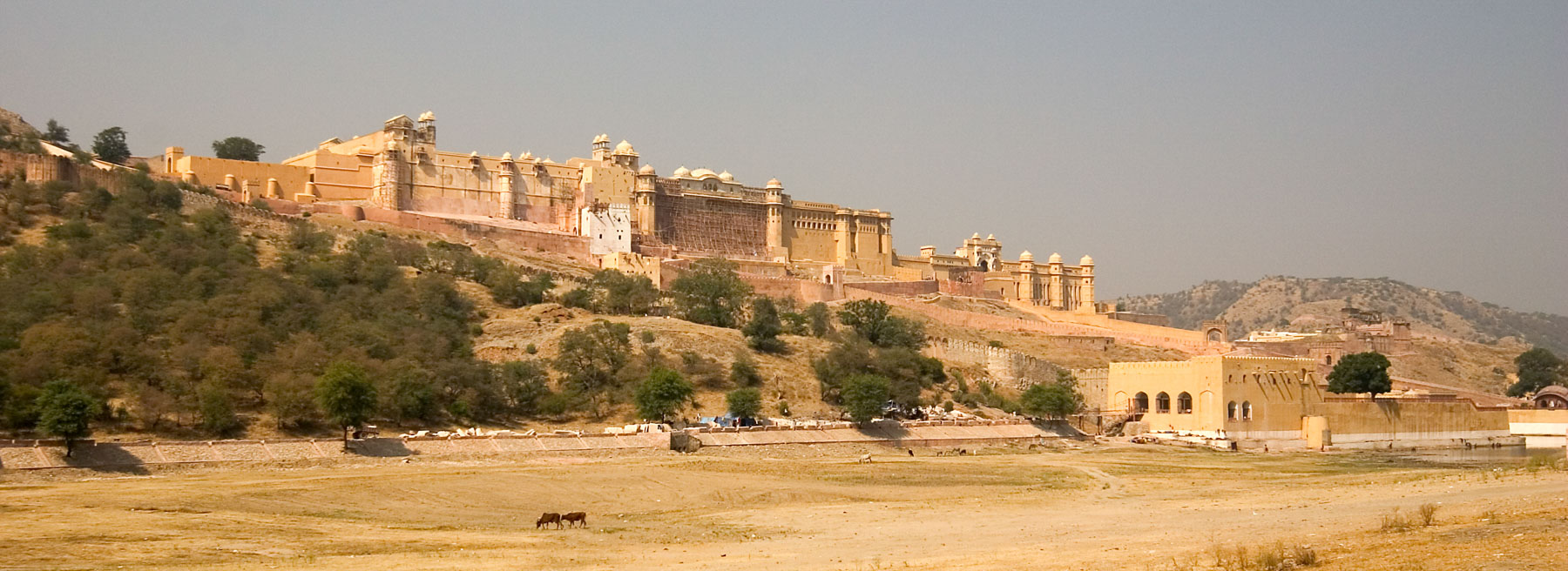 Jaipur is a true assault on the senses. The forts and palaces are examples of India’s wealth and extravagance in the eighteenth century, while the crowded and often dirty city centre, and aggressive touts can make it an exhausting city to stay in.
Jaipur is a true assault on the senses. The forts and palaces are examples of India’s wealth and extravagance in the eighteenth century, while the crowded and often dirty city centre, and aggressive touts can make it an exhausting city to stay in.
The city centre was painted pink in 1856 to celebrate Prince Albert’s visit and it has been known as the pink city ever since.
Of all the forts, Amber Fort is the most impressive. Built in 1592 by Raja Man Singh, the fort was an elaborate residential palace.
Nearby Jaigarh Fort was built primarily as a defensive fort and overlooks Amber Fort. It looms large and seemingly impenetrable on top of the mountain.
Inside the pink city, sits the City Palace. Built between 1729 and 1732 by Jai Singh II, the palace is a beautiful example of Indian architecture. The Palace is still home to the Maharaja, so much of it is out of bounds, but what you can see is stunning.
There are so many things to see in Jaipur, it’s worth spending a bit of extra time here. Oh and keep an eye on the homes – we couldn’t help spying a cow sleeping inside a house, while its owner was on the verandah outside.
Join us on Facebook, Twitter and Instagram for more travel inspiration.
The onslaught of Delhi: a city of stunning contrasts A city of extremes
When we arrived in Delhi the first time we pretty much took the first train we could out to Gwalior, so we really didn’t get to see any of the city. But this time the reality of the city hit us completely.
Delhi is quite unlike any other place we’ve ever visited. It is a city of contrasts – a city of extreme poverty and excessive wealth. A city packed full of people, but most of all a city of intrigue.
Delhi, more than any other part of India is exhausting. But like the country overall, it gets under your skin and is with you long after you leave.
Pahar Ganj, the old part of the city, is dirty and grungy and you can buy pretty much anything very cheaply from the markets in the main street. But it is so very very interesting.
It is a stark contrast to Connaught Place, the new part of the city, which could rival the most cosmopolitan cities in the world.
There are more than 1000 monuments in Delhi, far too many to visit in any one trip, but it does mean there is always something to visit regardless of your tastes or your mood.
While most of the buildings have stood for centuries, the Lotus Temple is a newbie, built in the past 100 years.
Built by the Baha’I Faith a a place of multifaith worship, the temple looks remarkably like the Sydney Opera House! It is a definitely a building that is more impressive from the outside than the inside!
The UNESCO World Heritage listed Qutb Minar is the tallest tower in Delhi at 72.5m high. Building began in 1199. It was built in celebration of Qutb-Ud-din Aibak’s triumphs in northern India and to celebrate the eastern frontier of the Muslim world.
The miniaret was open for tours until the 1970s when a group of schoolchildren got caught inside when the lights went out. Many of the children died in the resulting stampede and the miniaret has been closed since.
It is still an interesting place to visit, however and the day we are there, there are a couple of school groups also exploring, so we found ourselves in the middle of many photographs and chatting to lots of kids!
The Jama Masjid and Red Fort are also well worth a look, that is if you’re not over visiting forts yet!
Join us on Facebook, Instagram and Twitter for more travel inspiration.
Visual splendour of the Taj Mahal – Agra’s Jewel
No trip to India is complete without a trip to Agra – and the Taj Mahal, but there is much more to see beyond this majestic monument.
In any other city the Itimad-Ud-Daulah – or Baby Taj as it is known – would be a well-known icon in its own right. Built of marble it is an impressive mausoleum, surrounded by beautiful gardens. But in Agra, this is a poor second cousin to the Taj.
Baby Taj was built between 1622 and 1628 for Ghiyas Beg, a Persian diplomat who served as the chief minister to Emperor Jehangir.
Across the river from Baby Taj is Agra Fort. Building of the sandstone and marble structure began in 1565 by Emperor Akbar and was not completed until after 1637.
The Fort is a stunning example of the extravagance of the ruling Maharaja. From the moment you step into the entrance it is clear this Fort is going to be something special. And it doesn’t disappoint. The intricate lacework in the palace wall, the stunning garden beds and the beautiful marble mosques make this one of the most impressive forts in India.
On a clear day you can see the Taj Mahal just up the river. Unfortunately, on the day we were there a haze of smog filled the air and we could barely make out the outline of India’s most famous building.
Of all the sights in Agra, none can compare to the Taj Mahal. It is one of the most recognisable sights in the world, but no matter how many pictures you have seen of this monument, nothing quite prepares you for the real thing. The size and scale are unbelievable and the beauty in the marble tiles is outstanding. I could have gazed at it for hours, which is fortunate because you can imagine how many photos Adrian wanted to take.
The Taj Mahal is simply stunning. Built between 1632 and 1653 the Taj was built by Mughal emperor Shah Jahan as a tomb for his favourite wife, Arjumand Banu Begum, who died giving birth to their 14th child .
In the words of Bengali poet Rabindranath Tagore the Taj is said to be a “tear (that) would hang on the cheek of time”. So romantic!
The Taj Mahal is clearly a major drawcard for tourists from around the world, but surprisingly local tourists far outnumber the western tourists and the vibrant colours of saris on the steps of the monument only add to the Taj’s visual splendour.
In complete contrast to the beauty of the monuments, the town in Agra is not a very attractive town. And many people, apparently get out of Agra as quickly as possibly rather than spend any time in the “dirty” streets.
However we found winding through the labyrinth of the Taj Gang region quite intriguing and, for the seasoned traveller at least, we’d recommend spending a few hours or a few days wandering through the streets and getting to know the place.
Also, be sure to check out the Taj from all sides, including the back – but don’t be surprised if there is no water in the river behind. While you may be fortunate to get the iconic image of the Taj reflected in the water, depending on the season the riverbed may be dry.
Join us on Facebook, Instagram and Twitter for more travel inspiration.
The surprising reasons we chose to volunteer in Uganda A 'sisters only' experience
The plan was simple, spend two weeks volunteering at Amari Community Development Organisation in Uganda, a week touring the country and then two weeks with our husbands in Cambodia for a holiday.
My sister, Julie, and I had never really travelled together before, and this wasn’t just any trip. This was spending time with some of the poorest children in the world, in a remote location without all our creature comforts in a country with a troubled past. What were we thinking?
Before we left, a lot of people asked us why we chose to go to Uganda to volunteer and how we picked Amari. (I’m pretty sure the subtext to that question was “why the hell are you going to Uganda, is it safe?”)
So let me try and convey what we went through, and how my sister and I ended up in Uganda.
Julie had wanted to volunteer overseas for more than 20 years but with kids and everyday life getting in the way it was something that was constantly being put on hold, saved for later in life.
About two years ago she felt it was finally time, the kids were all grown up, and long service leave was approaching.
When she asked me if I would go with her, I didn’t hesitate. I was very keen to volunteer overseas – a year working at World Vision Australia and travels through Africa had revealed the hardships many people face overseas. And besides, Ade and I will pretty much travel anywhere!
The decision of where to go and what to do wasn’t as easy as I had expected it to be. There are hundreds of websites out there offering volunteering opportunities. I’d already looked at a variety of these sites over the years and had read all about the moral dilemma of voluntourism.
Julie and I also spoke to various people we knew who had volunteered, read up as much about different volunteering experiences as we could and I’d read the Lonely Planet book Volunteer for good measure. We were well researched.
And yet, still it wasn’t an easy decision to make. Do we go to Africa or Asia, do we work with kids, on healthcare programs with animals, or women in need? When do we go? Do we go with a trusted organisation and if so which one, how can we be sure our money will support the community we want to work with and not just the agency arranging the volunteer program? And how can we ensure our time spent volunteering will actually be helping those in need?
After reading what felt like hundreds of websites, we narrowed down our search to working with kids, either at a school or an orphanage somewhere in Africa. We wanted to the experience to be meaningful to us, so wanted to do something that was close to our hearts.
I had been to Africa a few times, it’s a place that really gets under your skin. Our general impressions of Africa come from the media, which generally focuses on the negative. You never hear about the amazing scenery, the beautiful people or the community spirit. Sure, bad things can happen but bad things can happen anywhere. And besides Africa is a huge continent – you wouldn’t not go to Paris because there was trouble in Serbia…
I digress but as Julie was also keen to go to Africa this made things a little easier and after making that decision things really started to ‘click’ for us. Once we had decided to go to Africa to work with kids I told Julie about Marita Simpson, a family friend of Ade’s.
We use the term inspiring women a lot these days, but with Marita, the term is definitely well deserved. Marita grew up in the outer suburbs of Melbourne, Australia. She travelled to Africa, to Uganda, some years ago to teach in a local school. While she was there she was so moved by the place and the people and felt a real calling to help the local community. While most of us might donate money or begin a child sponsorship, Marita felt she could do more so she established the Amari Community Development Organisation.
According to its website “Amari was established in 2008 to help relieve the effects of poverty through education, development and welfare programs in developing countries, principally Uganda”.
The first stage is a school to help educate and support orphaned and vulnerable children.
 Amari is in Buliisa, a remote area in western Uganda close to the border of the Democratic Republic of Congo. It is about eight hours drive from the country’s capital, Kampala, and not far from Murchison Falls National Park.
Amari is in Buliisa, a remote area in western Uganda close to the border of the Democratic Republic of Congo. It is about eight hours drive from the country’s capital, Kampala, and not far from Murchison Falls National Park.
I had met Marita previously and we regularly donated to Amari with Ade’s family so I knew the work she was doing quite well and felt that it could be a great fit for us and that we could be quite useful to Marita. Julie agreed.
Marita’s response was very promising, we could come for as long as we wanted, stay at the complex and help with a range of things – from public relations work, to helping with computers and varnishing buildings; who knew exactly what we would be doing, but we knew we would be helping the local community directly.
After making that decision, things started to snowball, somewhere along the way we decided to organise a fundraiser for Amari – something neither of us had any experience in.
We can’t say for certain where the idea came from, neither of us will own up to it – though I’m pretty certain it came from the myriad of expressions of interest in helping us along the way and was championed in the beginning by Julie.
People inherently want to help others; after all study after study shows altruism actually makes us happier. So it seemed natural that we would bundle up that enthusiasm into a single event and try to raise money.
Marita suggested that if people wanted to give something to the community they could donate money to help educate the children and to support medical needs.
Of course we never do things by halves, so we held the fundraiser just two days before we flew out. There’s nothing like a bit of last minute pressure.
We also wanted to provide little gifts from Australia for each of the kids – all 160 of them.
So as we were trying to decide what to pack for Africa and Cambodia, book tours (after all you can’t go all the way to Uganda and not take a sneaky side trip to see the gorillas or go on safari), wrestle with visas and how to manage our money there, we also found ourselves wrapping raffle prizes, arranging items for auction, finalising attendee numbers and food dishes and working out speeches and donations.
And as we prepared to head off on our amazing adventure we were busy counting money, thanking all those who contributed, sharing a wrap up of the event with all who attended and sorting out what to put in the kids’ packs.
On the night we raised almost $8000 and helped spread the word about Amari and the plight of children in Uganda. And while it was so overwhelming to combine a trip and a fundraising event, it helped us channel our energy and excitement before we began our amazing journey.
And yes, it probably helped take our minds off that underlying question – but is it safe?
You can learn more about Amari or follow our adventures on Facebook.
